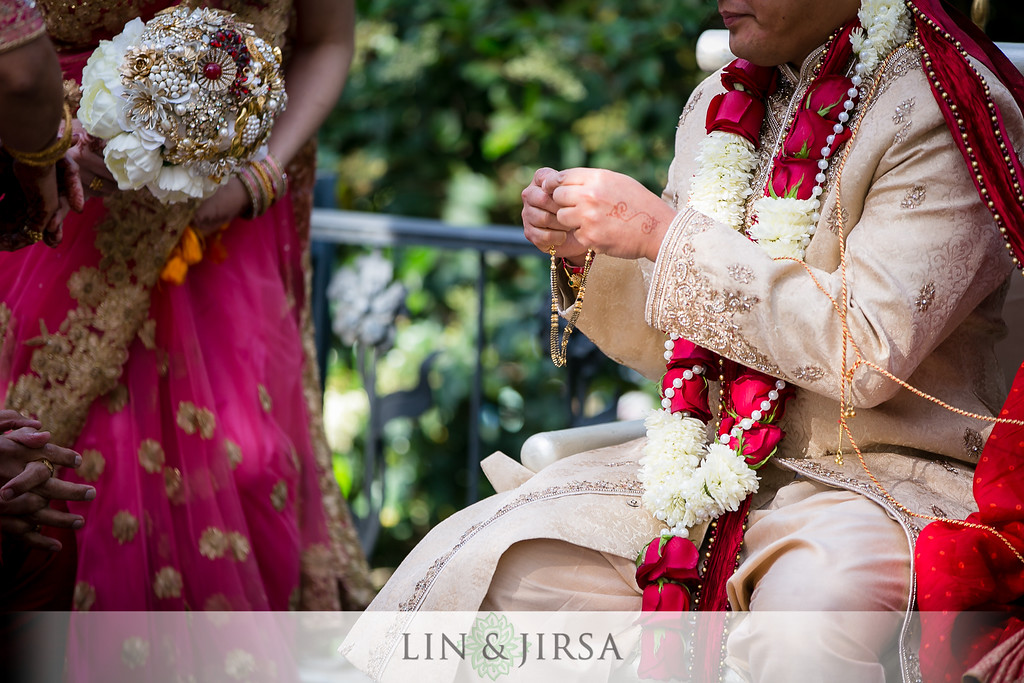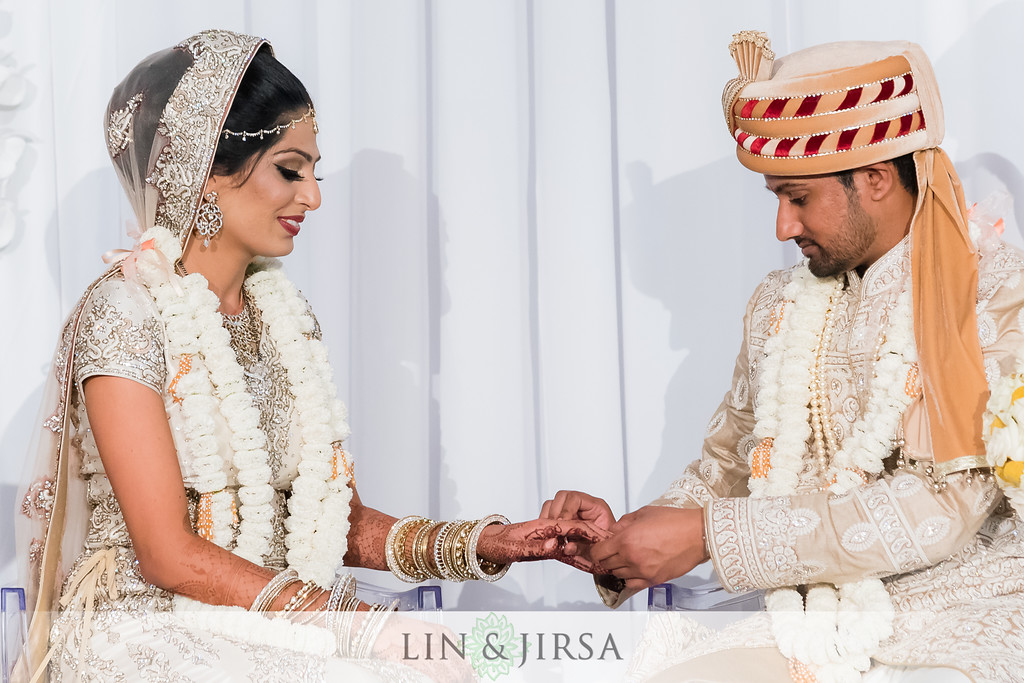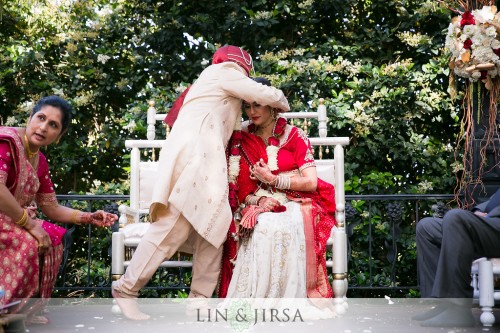
Mangalsutra Ritual
The Mangalsutra, a black and gold necklace with a gold or diamond pendant symbolizes good luck, love, and friendship. In Sanskirt, ‘mangala’ translates to sacred and ‘sutra’ to thread. Following the Hastamelap, the Bride moves to sit on the Groom’s left side, taking the closest position to the Groom’s heart. He then proceeds into the ceremony called Mangalya dharanam and places the Mangalsutra around her neck and applies sindoor, red vermillion (also known as kumkum), to the center of her forehead. These two offerings signify the Groom’s devotion to his Bride and the Bride’s new status as a married woman.
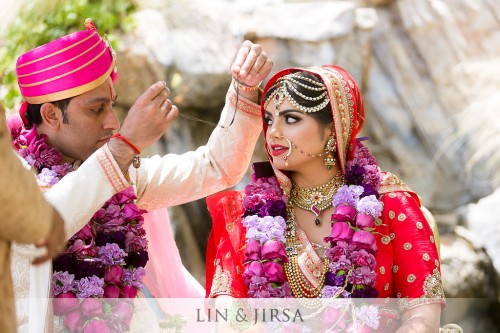
A ring exchange takes place following the offering of the Mangalsutra, where the couple commits to support each through the challenges that life may throw them, in happiness and sorrow, with unconditional love. The Mangalsutra carries immense importance in the Hindu wedding ceremony, as it is the moment where the couple expresses their commitment to one another.
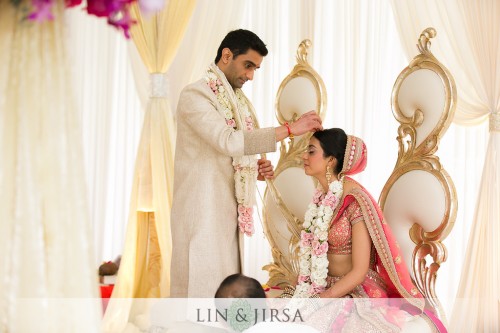
Significance of Mangalsutra
The Mangalsutra beads contain the marks of Lord Vishnu and Shiva, protecting the Bride from evil powers. The Sindhoor is purposely not placed on the bride prior to the wedding ceremony due to its significance during the ritual. It not only serves as her rite of passage from a ‘girl’ to a married woman, but also her newly gained status of an adult who is capable of running a household.
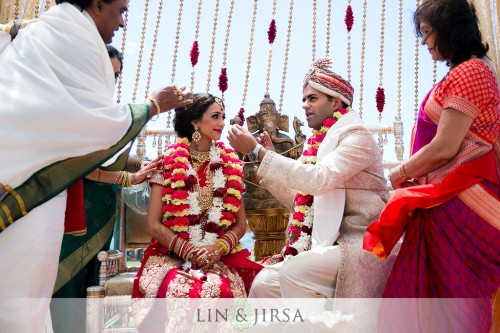
The Tying of the Mangalsutra
The auspicious thread is prepared using turmeric paste which is yellow in hue, the same paste used during the Bride’s Haldi ceremony. While he recites Vedic mantras, the Groom ties three knots as he is placing the necklace around his Bride’s neck. It may vary depending on the Bride’s preference however it is traditional that the pendant be strung on this turmeric thread versus a gold and black beaded chain.
Brides may choose to re-string the pendant on a beaded chain in the months following the marriage. According to tradition, there are strong beliefs of superstition surrounding the Mangalsutra. The destruction or loss of the necklace is considered ominous and therefore holds great value not only as a symbolic representation of the marriage between the two, but a sacred protective token from the Gods.
More Images of Mangalsutra
